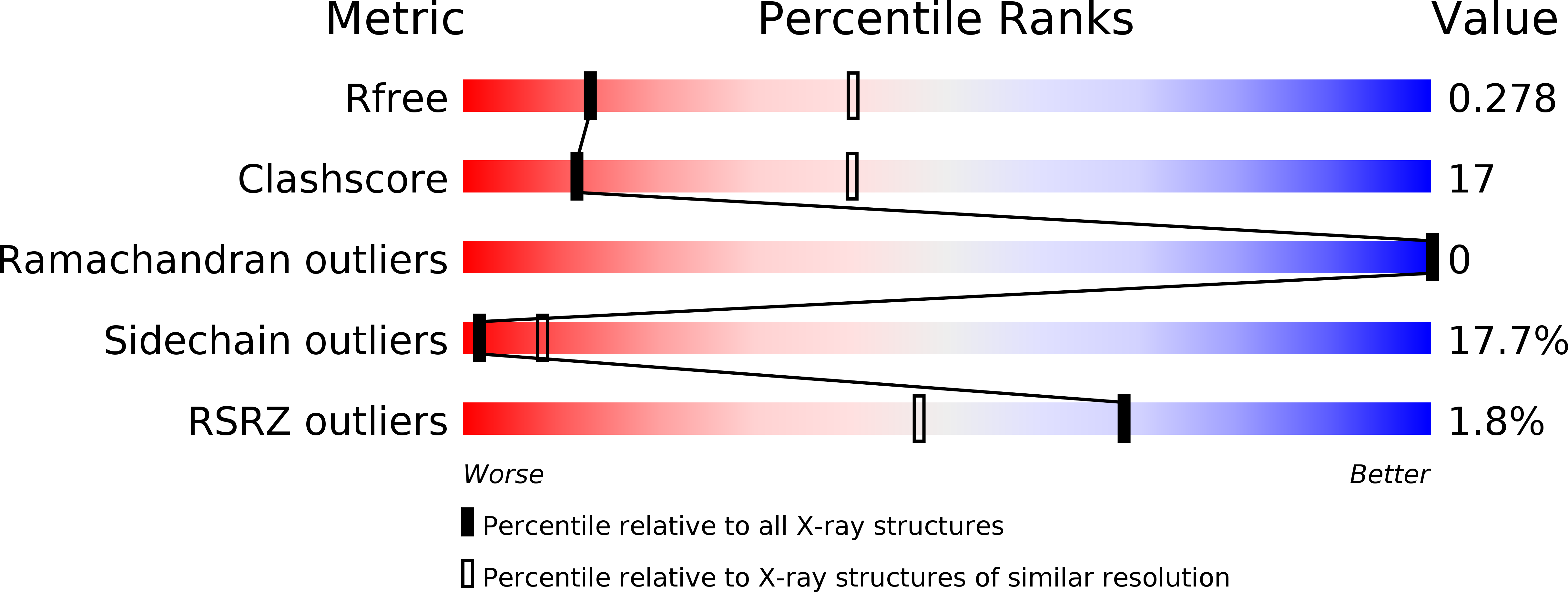
Deposition Date
2015-03-05
Release Date
2015-11-04
Last Version Date
2024-03-20
Entry Detail
PDB ID:
4YLC
Keywords:
Title:
Crystal Structure of Del-C4 mutant of hsp14.1 from Sulfolobus solfatataricus P2
Biological Source:
Source Organism:
Sulfolobus solfataricus (strain 98/2) (Taxon ID: 555311)
Host Organism:
Method Details:
Experimental Method:
Resolution:
3.10 Å
R-Value Free:
0.27
R-Value Work:
0.23
R-Value Observed:
0.24
Space Group:
I 4


